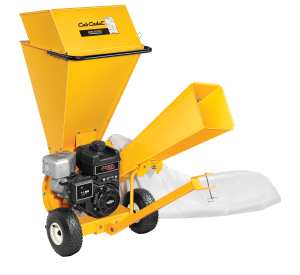 Getting your land ready for the winter means pruning and clearing dead branches. When it comes time to run that wood through your Cub Cadet chipper, keep yourself safe; these tips will help you get the job done without having to use your first aid kit or visit the hospital.
Getting your land ready for the winter means pruning and clearing dead branches. When it comes time to run that wood through your Cub Cadet chipper, keep yourself safe; these tips will help you get the job done without having to use your first aid kit or visit the hospital.
1. Read the Manual
That safety text isn’t just there to make your equipment lawyer-friendly, it’s based on a significant amount of testing to ensure you can operate your chipper safely. Letting someone else use your chipper? Make sure they’re versed in proper safety practices, too.
2. Keep Yourself Out of the Chipper
Unless you really feel like reenacting parts of “Fargo,” you need to do everything you can to make sure the only limbs that reach the blades are from a tree. Avoid loose clothing that could be caught in the machine, and never reach into the chute. Before you access the internal components, make sure everything has stopped spinning and the engine isn’t just off, but set up so it can’t accidentally start. The simplest way to do this is to disconnect the spark plug.
3. Use Wood to Unclog Wood
What should you do if a piece of wood gets jammed in the flails or blades? Keep a long branch handy to dislodge these chunks. Once the mechanism is free again, it will just trim the branch a little until you can pull it out, while a metal or plastic tool could damage the machine or be forcefully ejected.
4. Cut Small Pieces
The larger the piece of wood is, the higher chance a large chunk will be ejected out of the chute. Feed in wood slowly to help control the size of outgoing chips, and only insert branches that are within the chipper’s size limit.
5. Wear Head Protection
Being hit by a flying chunk of wood hurts, and it can do some serious damage if it strikes your head. Look for a Type II, Class G or Class E hard hat that meets the latest ANSI/ISEA Z89.1 standard, which is currently Z89.1-2009. Unlike Type I models, these hard hats are designed to protect from impacts to the side of the head.
6. Wear Gloves
When working with wood, there’s always a chance of getting splinters, and gripping a bark-covered twig can do some damage to your skin if the chipper pulls it out of your hand as it hits the blades. Leather gloves offer the best protection from both dangers.
7. Use Hearing Protection
There’s more to worry about than just chopping limbs or getting hit by bits of wood. The engine in your chipper or shredder probably produces at least 90 db, and there’s additional noise from the flails and blades, yet it takes just 85 dB to cause permanent hearing damage.
8. Keep the Work Area Clean
Debris will pile up around the chipper as it’s used, creating a loose surface that’s easy to slip on. When a layer of chips and wood debris build up around the chipper, take the time to sweep it out of the way.
9. Don’t Work in an Enclosed Area
It may be tempting to chip the wood in a garage or under a carport to stay out of the sun, but this allows carbon monoxide from the exhaust to collect. When you breathe it in, this gas bonds with red blood cells, preventing them from carrying oxygen. Inhale enough of this gas, and you’ll asphyxiate.
10. Keep Up on Your Chipper’s Maintenance
When you need parts for your Cub Cadet chipper/shredder, visit www.cubparts.com. We’re a certified Cub Cadet dealer, so we have the OEM replacement parts you need to keep your equipment running safely, including blades, flails, anvils, belts and engine parts.
